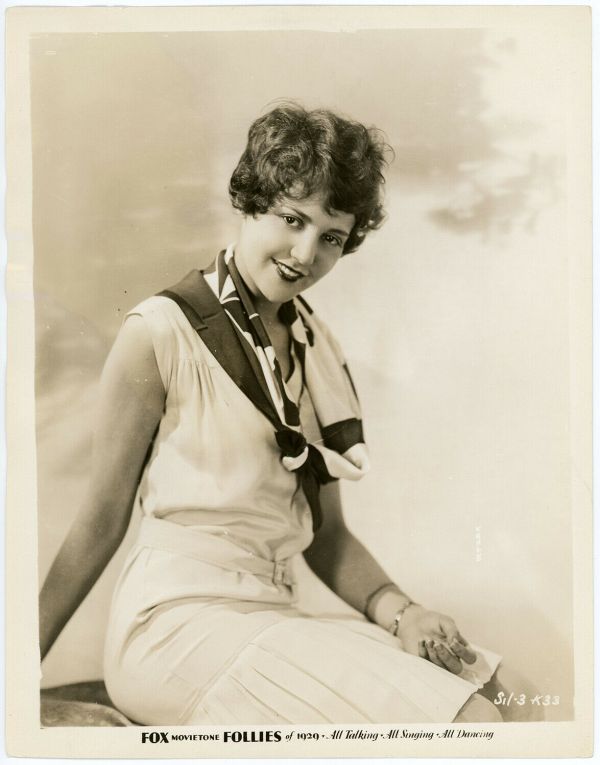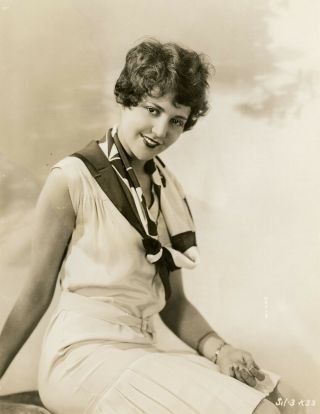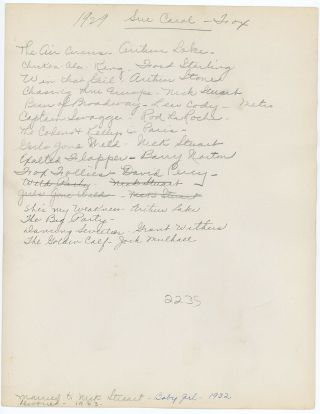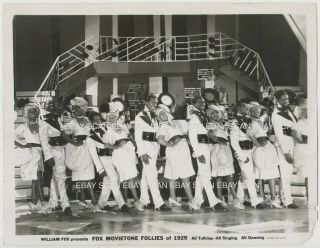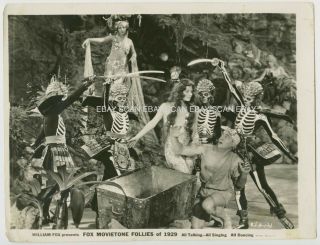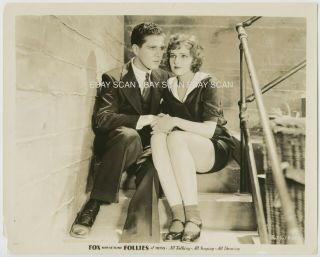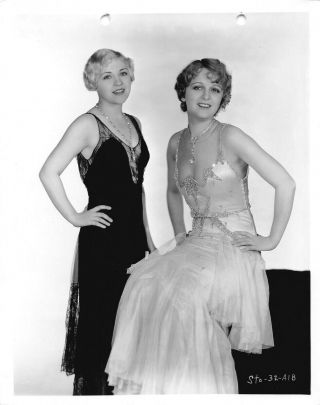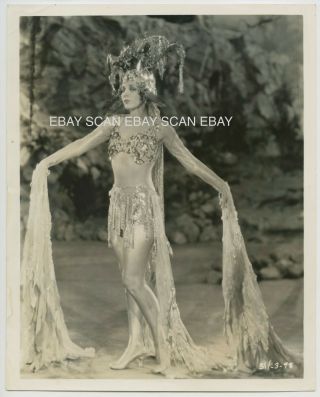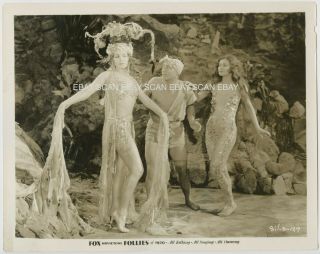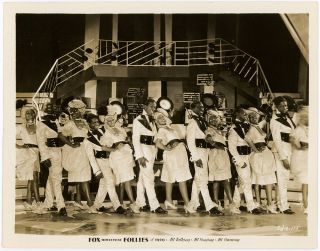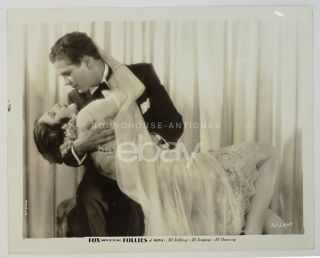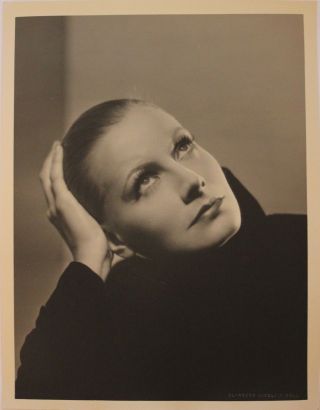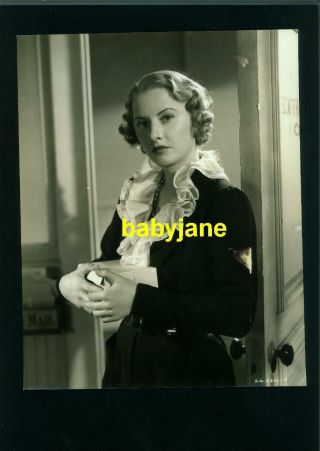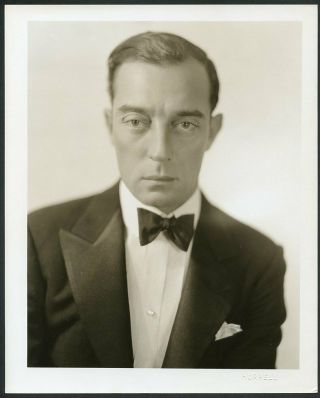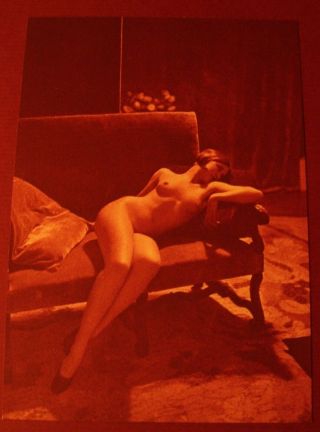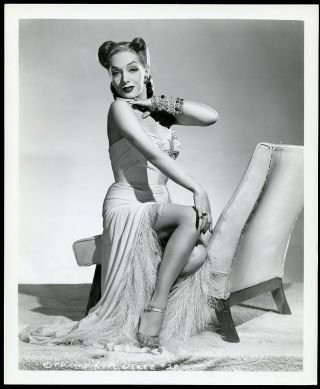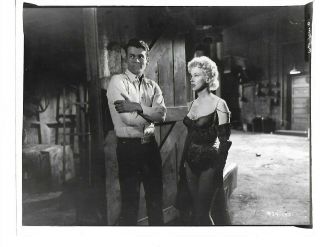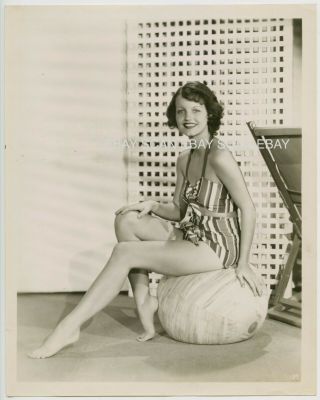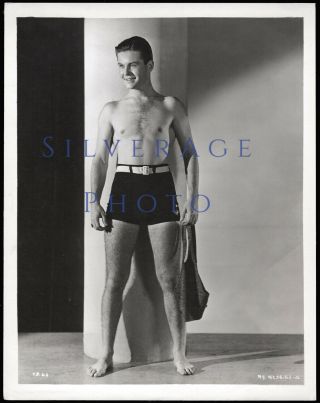Preppy Flapper Cutie Sue Carol Fox Movietone Follies Of 1929 Photograph
Item History & Price
Born to a wealthy Chicago family, Sue Carol was exceptionally well-treated in Hollywood due to her social prominence. She landed leading roles in films during the late 1920s and e...arly 1930s, and usually played exuberant flappers.
Photograph measures 8" x 10" on a glossy single weight paper stock with handwritten notations on verso.
Guaranteed to be 100% vintage and original from Grapefruit Moon Gallery.
More about Sue Carol:
Sue Carol (born Evelyn Jean Lederer, October 30, 1906 – February 4, 1982) was an American actress and talent agent. Carol's film career lasted from the late 1920s into the 1930s; when it ended, she became a talent agent. The last of her three marriages was to one of her clients, Alan Ladd, from 1942 until his death in 1964.
Carol was born Evelyn Jean Lederer in Chicago, Illinois to Samuel and Caroline Lederer, Jewish emigrants from Austria and Germany, respectively.
While Carol was in Hollywood on vacation, a director offered her a screen test that resulted in a contract with Fox. She took it and began playing minor parts.One of the WAMPAS Baby Stars, she performed in motion pictures from 1927 until 1937.
Among the movies in which she appeared are Fox Movietone Follies of 1929 and Girls Gone Wild (both 1929). Her films were made in association with producer Cecil B. DeMille and Metro-Goldwyn-Mayer. After retiring from acting in the late 1930s, Carol established her own talent agency, the Sue Carol Agency.
As a young woman, Carol married Allen H. Keefer, a buyer for a Chicago stock yard firm, divorcing in early 1929. In July 1929, Carol became engaged to actor Nick Stuart, and the couple married that November. They had a daughter, actress Carol Lee Ladd (born 1932), who was briefly married to actor Richard Anderson. In 1933, Sue Carol was cleared in a case involving the disappearance of a baby from a Brooklyn, New York, family. The family had complained that the baby had been taken for adoption in November 1932 by a woman who said she was acting on behalf of Carol.
She married actor Alan Ladd on March 15, 1942, in Mexico. They had a son, David, and a daughter, Alana Ladd Jackson (married to radio commentator Michael Jackson). Carol was also the stepmother of Alan Ladd, Jr. She was Alan Ladd's manager until his death.
Carol died on February 4, 1982 in Los Angeles, California, from a heart attack and is interred next to Alan Ladd in the Forest Lawn Memorial Park Cemetery in Glendale, California.
For her contribution to the motion picture industry, in 1982, Carol has a star on the Hollywood Walk of Fame at 1639 N. Vine Street. In 1998, a Golden Palm Star on the Palm Springs, California, Walk of Stars was dedicated to her.
Biography From: Wikipedia
More about Alexander Kahle:
When most people think of motion picture stills photographers, they think of such renowned portraitists as George Hurrell, Ruth Harriet Louise, Clarence Sinclair Bull, and Eugene Richee, who created the glamour and iconography of the classic film stars of the 1930s and 1940s. Often forgotten are the lensers who concentrated on scene stills, establishing a film’s mood or theme as they also developed character. German Alex Kahle brought dynamism and verve to his work as a scenes and off-camera stills photographer by shooting for the angles, making his images often “pop” off the page.
Born October 11, 1886 in Berlin Germany, Alexander Paul Kahle achieved a modest education, attending school through the eighth grade before going to work. International Photographer reported in its April 1934 issue that he found his first film industry job in 1902, going on to work for Nestor, Decla, Maxine, and UFA as a stills photographer over the years.
Kahle married his wife, Hedwig Clara Lena Peste, May 5, 1916 in Cottbus, Germany during his service in the 52nd regiment of Marshal von Kluck’s Germany army, achieving the rank of Sergeant. He supposedly survived 180 hand-to-hand struggles, per the May 12, 1930 Big Springs Herald and other newspapers. Kahle’s daughter, Ursula, was born October 19, 1920 in Berlin during his employment with UFA.
Naturalization papers show that Kahle and his family emigrated to America from Hamburg, Germany, arriving in New York City November 11, 1923 on the ship Manchuria under the last name Kahler, with the intent to settle in Gritley, Kansas. The family ended up in Sunnyvale, California by early 1924, with Kahle declaring his intentions of becoming a United States citizen November 26, 1924 in San Jose. By December 31, 1924, the Kahles lived in Los Angeles. The five foot seven inch, 162 pound, brown-eyed Kahle soon found a job working as a stills man for Pathe.
By 1930, Kahle shot scene stills for Fox, working on such films as Beatrice Lillie’s “Are You There?, ” “Two Kinds of Women, ” “Charlie Chan’s Chance, ” “She Wanted a Millionaire, ” “Young America, ” and the George O’Brien oater, “Rainbow Trail.” Kahle also worked with Will Rogers on “Down to Earth, ” quickly becoming one of his favorite photographers. He showed equal skill shooting on a soundstage as he did shooting out on a rural location. The bulber often shot action and portrait images on an angle, rendering them forceful and energetic, about to jump off the page.
Kahle continually worked on his skills, shooting landscapes, portraits, and in color, which he exhibited at shows such as the Motion Picture Engineers convention in May 1931 at the Hollywood American Legion as part of the International Photographers Local 659 exhibition. The journal International Photographer would regularly feature his work in covers or articles over the next decade, demonstrating his strong compositional eye as well.
In 1932, Kahle joined RKO, shooting such Ginger Rogers’ films as “Rafter Romance” and “Professional Sweetheart, ” and going on to become the regular stills man on Katharine Hepburn movies. His skill and professionalism led to his work on many top RKO films. He also shot action films, working on classics like “King Kong.”
To relax, he joined RKO’s crack rifle shooting team of Ernest Bachrach, Fred Hendrickson, and Robert Coburn, doing well in the 1936 national small bore rifle competition. This practiced their aim as well as providing camaraderie and relaxation.
Kahle took a break from RKO in 1937 when he was hired to go on location to Pago Pago in American Samoa as the lead stills photographer for the Samuel Goldwyn production, “The Hurricane.” The April 2, 1937 Los Angeles Times reported that eighteen members of the Goldwyn company sailed on the SS Monterey to Samoa through the cooperation of the Navy Department. The lenser led a crew of three in making and producing stills in the humid location, turning out prints in their hot dark room while wearing shorts and shirtless.
When he returned, Kahle took right up where he left up with RKO, back to shooting scene stills for major productions. He captured dynamic, full of life images in Lone Pine for the George Stevens film, “Gunga Din, ” starring Cary Grant, Douglas Fairbanks, and Victor McLaglen, showing the vitality of the production. Kahle also became the stills photographer for Orson Welles’ RKO films, “Citizen Kane” and “The Magnificent Ambersons.”
The stills man thought highly of Welles and his cinematographer Gregg Toland, writing a complementary article for International Photographer describing the production, called “Welles and the Cameraman.” In it, Kahle also commented on his working style, noting how straight shots are often not as effective as shooting on an angle, using the example of shooting a drunk man on an angle, giving the impression he is stronger in his cups and possibly in pain. He also revealed, “I am a firm believer whenever possible in getting the camera low and shooting up.” This made the main subject seem larger and more pronounced.
Kahle noted how “Citizen Kane” was an extension of the work Toland did in “The Long Voyage Home, ” adapted for working with Orson Welles. Shooting the film was an opportunity to conduct experiments for both men, as Welles wanted the camera to be a main character and tell the story. The director also built ceilings for every set, asked actors to look directly in the camera, and violated other Hollywood photography cliches. The camera became “an adjunct to the creation of mood and feeling, ” heightened by tight compositions, the intensity of images in ceilinged rooms, and particularly, sharp focus. Some of the shots traveled the length of two sound stages while remaining in focus, keeping everyone in the production on their game. This was a new way of focusing attention on both acting and mise-en-scene.
The photographer himself found his work honored several times in the Academy Stills Shows during the 1940s. In 1942, Kahle won Best Action Still for a shot of Anna Neagle dancing, taking the same award in 1943. Kahle won Best Two-Person Portraits for a shot of Barbara Bel Geddes and Henry Fonda in the 1947 show. The lensman’s strong visuals heightened the physical power of the images.
I n the late 1940s, Kahle found himself working as stills photographer on John Ford films, thanks to recommendations by Katharine Hepburn. Ford’s abrasive personality caused problems with some crew members, but Hepburn believed Kahle could still achieve strong work through the harsh conditions. Harry Carey Jr. reported in his autobiography that Kahle became Ford’s favorite photographer, giving a special oomph to his westerns.
Kahle sometimes concentrated so tightly on his work that he injured himself. Daily Variety reported in 1940 that the photographer accidentally locked himself in a film vault on the set of the RKO film, “The Sons of the Musketeers, ” while changing out film reels. Actor Cornel Wilde heard his muffled shouts three hours later and freed him from the shed. Variety also noted in their July 10, 1950 issue that Kahle “received painful burns on his right hand yesterday when a color camera exploded and backfired while he was shooting a still for Edmund Grainger’s “Blackbeard the Pirate.”
He continued shooting stills after he recovered, but suffered a heart attack on April 16, 1958. His health was never the same. On August 27, 1968, Kahle suffered a major attack dying later the next day.
Though mainly forgotten today, Kahle’s strong scene stills seem to jump off the page at viewers, brimming with vitality and energy. Alex Kahle shot the angles that made stars look great and gained his work high recognition.
Biography From: Mary Mallory / Hollywood Heights: Alex Kahle Shoots the Angles



